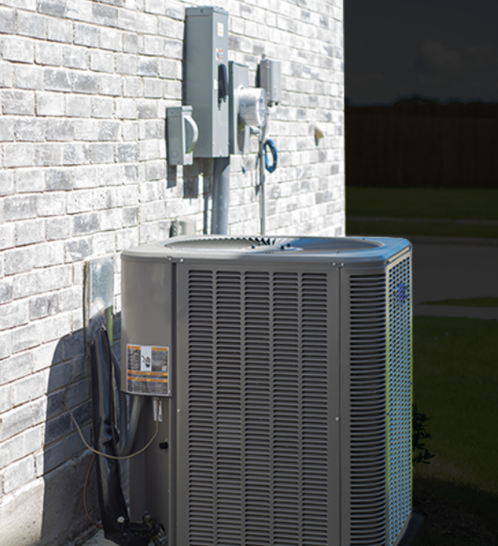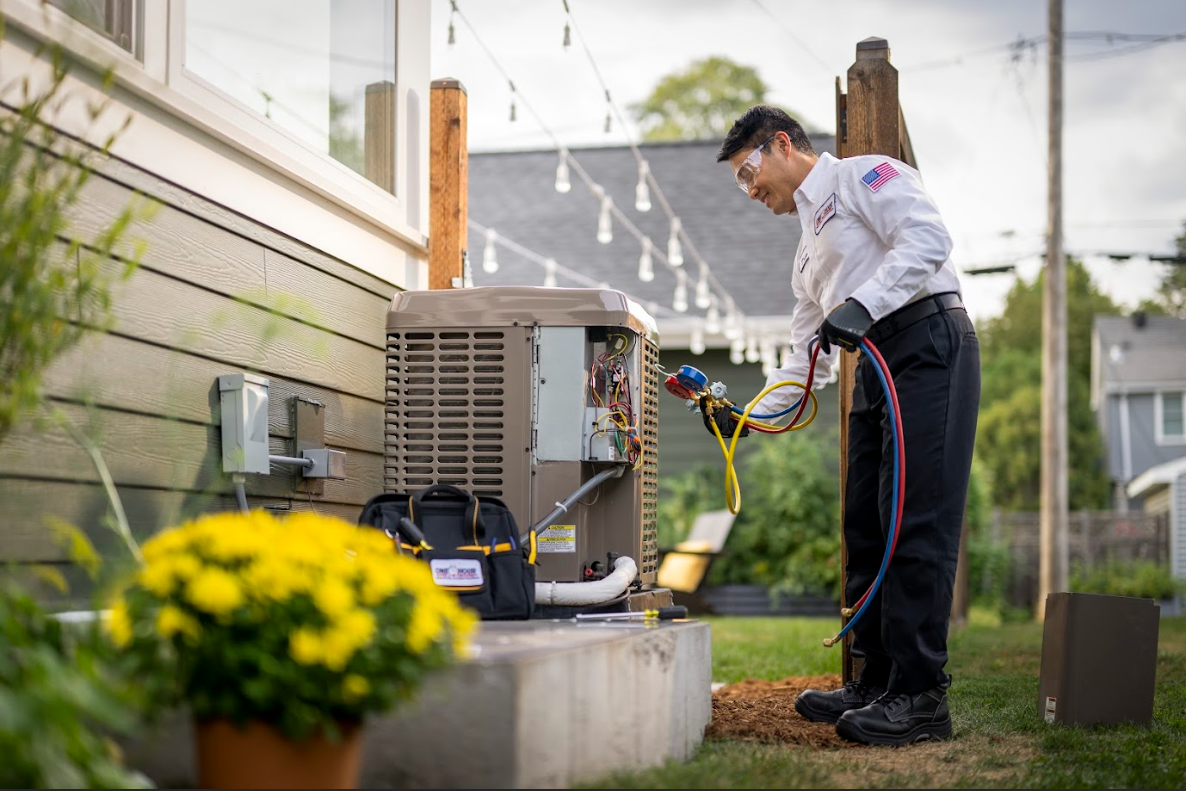
How to know if your furnace is safe to use
A safe furnace does three things well: it burns cleanly, vents completely, and shuts itself off when something goes wrong. Homeowners across Ogden, South Ogden, Washington Terrace, and North Ogden ask the same question every fall: is the furnace safe to run? The answer lives in a few visible signs, a few smells and sounds, and a quick look at maintenance history. This article walks through practical checks anyone can do, explains when to call for furnace repair Ogden, and shares how professionals test for hidden hazards.
Start with the recent history
Safety and reliability track with upkeep. A gas furnace that sees annual service burns cleaner, vents better, and keeps sensor readings in range. If a system has not had a full tune-up in 12 to 18 months, it deserves a cautious start-up. In older Ogden homes near the East Bench or in bungalows around 25th Street, original flues, aging gas valves, and flexible connectors can look fine but fail a basic pressure test. A quick service visit before the first cold snap is cheaper than an emergency call on the first 20-degree night.
The flame tells the first story
Look through the burner sight glass. A safe flame on a natural gas furnace is steady and blue with small yellow tips at most. A lazy yellow or orange flame points to poor combustion, which can produce carbon monoxide. If the flame lifts off the burner or flickers when the blower starts, the system may have a drafting or venting issue. On windy Ogden nights, downdrafts through older chimneys can cause this behavior, especially in homes west of Harrison Boulevard where roofs see more gusts. Any flame that rolls out of the burner area when the unit lights calls for immediate shutdown and a technician.
Smells that matter on start-up
A light dusty smell for 10 to 20 minutes is normal after the first heat cycle of the season; dust on the heat exchanger and electric elements burns off. A sharp, metallic, or persistent acrid odor signals overheating. Rotten-egg smell suggests a gas leak. Natural gas utilities add mercaptan to make leaks obvious. If that odor is present, do not light the furnace, avoid using switches, and step outside to call for service or the gas utility. Homeowners sometimes confuse sewer gas with mercaptan. If the smell is from a floor drain, it fades when you pour water into the trap. Gas odor stays sharp and gets stronger near the furnace or gas line.
Sounds that separate normal from risky
A safe system starts with a brief hum from the inducer motor, a soft click from the gas valve, then a consistent roar that settles as the blower ramps up. Loud bangs at ignition often come from delayed lighting, which can crack heat exchangers. High-pitched squeals can indicate a failing blower motor bearing. Rhythmic booming or “whoofing” can point to blocked burners or a vent restriction. In split-level Ogden homes, long vent runs through tight joist bays can trap condensation and cause that pattern. Repeated loud noises are reason enough to shut the system off and schedule furnace repair Ogden UT.
Venting and exhaust in Ogden’s winter
Proper venting keeps combustion gases moving outside. High-efficiency furnaces use PVC intake and exhaust pipes. Check that both terminations outside are clear. After a heavy Weber County snowfall, drifting can block lower wall vents on the north side of homes. Ice can form on terminations during prolonged single-digit nights and restrict flow. Standard-efficiency units vent through metal flues into chimneys. White, flaky corrosion on the flue, loose joints, or backdraft marks (soot stains around the draft hood) indicate unsafe venting.
A simple backdraft test uses smoke from an incense stick. Hold it near the draft hood once the furnace has been running a few minutes. The smoke should pull into the hood steadily. If it spills out, shut the furnace off and call for service. This test is quick, but a pro will confirm with a combustion analyzer and draft gauge, which gives precise data, especially useful in tight newer homes in North Ogden.
Carbon monoxide alarms and placement
Every home that uses gas or has an attached garage should have working CO alarms. Place one near each sleeping area and one on the main level. Do not mount them right next to the furnace; alarms belong where people will hear them. Replace sensors every five to seven years, as most have a limited life. An alarm that chirps needs a battery or replacement. An alarm that goes off needs action. Step outside, call 911 or the gas utility, then call a licensed HVAC company for testing. Do not silence and resume operation without finding the cause.
Filters, airflow, and heat stress
Restricted airflow overheats heat exchangers and trips safety limits. A dirty filter is the most common cause. Check it monthly during heavy use. In many Ogden basements, the filter is in a tight slot near the floor; owners sometimes install it backward or leave gaps. Arrows on the filter frame should point toward the furnace. If a new filter whistles or collapses, the furnace may need a different filter type or size. Closed supply registers in spare rooms can also push static pressure too high. The blower works harder, temperatures spike, and the furnace cycles off on limit. These short, hot runs wear out parts and increase risk.
Electrical and safety controls that save the day
Modern furnaces have several layers of protection. The pressure switch confirms the inducer is moving air through the heat exchanger. Flame sensors verify that burners lit correctly. High-limit switches stop the gas if internal temperatures climb. If the furnace starts then shuts down after a few seconds, the flame sensor may be dirty or the ground connection weak. Homeowners sometimes wipe sensors with sandpaper and scratch the protective coating, which shortens life. A technician cleans with the right abrasive and checks microamp readings. In homes around Ogden Canyon where humidity varies, marginal sensors fail more often. Replacing a $30 sensor is cheaper than ignoring lockouts that strain the igniter and control board.
Aging equipment and the heat exchanger question
Heat exchangers face thermal expansion every cycle. Over time, cracks can form. A crack can allow exhaust gases to mix with household air. Symptoms include soot in the cabinet, CO readings in the supply, or a flame that moves when the blower turns on. Visual inspection helps, but many cracks hide under crimped seams. Professionals use borescopes and combustion analyzers to test. If a technician finds a confirmed breach, replacement is the safe call. In 20 to 25-year-old units common in mid-1990s Ogden builds, a new furnace is often more cost-effective than a heat exchanger alone, especially once labor and warranty limits are considered.


DIY checks before the first cold front
- Replace or clean the filter, confirm proper size and airflow direction, and verify no return grilles are blocked by furniture.
- Check the thermostat, new batteries if applicable, and set it to heat with a reasonable setpoint; confirm the fan runs smoothly.
- Inspect the visible flue or PVC vent and the outdoor terminations; clear leaves, nests, snow, or ice and secure loose joints.
- Look at the burner flame through the sight glass for steady blue fire; note any soot or scorch marks on or around the cabinet.
- Test CO alarms using the test button and check the manufacturing date; replace units older than seven years.
These steps catch simple hazards. They do not replace a combustion test. A complete safety check from a licensed tech in Ogden includes gas pressure measurement, manifold adjustment, draft verification, flame signal readings, temperature rise within manufacturer specs, and inspection of the heat exchanger, inducer wheel, and blower assembly.
Why location in Ogden changes the checklist
Local conditions matter. Homes near Harrison Boulevard see stronger canyon winds; wind caps on vents reduce downdrafts and nuisance shutdowns. West Ogden homes with older chimneys may have liner issues; a metal liner sized to the appliance improves draft and reduces condensation damage. In newer North Ogden subdivisions, tight envelopes and large kitchen range hoods can depressurize the home during heating cycles. A make-up air strategy solves the issue. Basements with swamp cooler ducting left open can also cross-connect return and supply air in odd ways that cause short cycling. A local technician who works these neighborhoods daily will spot these patterns fast.
When to shut it off and call for furnace repair Ogden
If gas odor is present, flames are yellow and sooty, the furnace booms at ignition, CO alarms sound, or the vent pipes show heavy corrosion or disconnection, switch the system off and schedule service immediately. Repeated limit trips, frequent resets, or visible scorch marks also qualify. Homeowners can change filters and clear vents, but they should not adjust gas valves, bypass safety switches, or tape cracks in vent pipes. Those fixes do more harm than good.
What a professional safety visit looks like
A thorough service call in Ogden, UT should take 60 to 90 minutes on a gas furnace. The technician will:
- Check static pressure, temperature rise, and blower speed to confirm safe airflow. Too high a rise indicates heat stress.
- Measure incoming gas pressure, set manifold pressure, and verify clean, complete combustion with an analyzer.
- Inspect and clean burners, flame sensor, and igniter; confirm strong flame signal and reliable ignition sequence.
- Verify venting and draft, test pressure switch operation, and examine the heat exchanger with a scope where possible.
- Tighten electrical connections, test amps on motors, and confirm safety switches trip and reset properly.
These steps catch both immediate risks and early wear. They also document readings so future changes stand out. That record saves time and money on the next visit.
Ready for winter in Ogden
A safe furnace starts with clean air, correct combustion, and proven controls. Most problems announce themselves with small signs: a color shift in the flame, a new noise, a short HVAC Ogden cycle. Acting early reduces risk and keeps heat steady through the coldest stretches along the Wasatch Front. For fast, local help with furnace repair Ogden or a pre-season safety check, One Hour Heating & Air Conditioning serves Ogden, South Ogden, Washington Terrace, Riverdale, and nearby communities. Call to schedule a same-day visit. A short appointment now beats a long night without heat when the temperature drops.
One Hour Heating & Air Conditioning provides trusted furnace repair in Ogden, UT and full-service HVAC solutions for homes and businesses. Family-owned and operated by Matt and Sarah McFarland, our company is built on honesty, hard work, and quality service—values passed down from Matt’s experience on McFarland Family Farms, known across Utah for its sweet corn. As part of a national network founded in 2002, we bring reliable heating and cooling care backed by professional training and local dedication.
Our licensed technicians handle furnace and AC installation, repair, and maintenance, heat pumps, ductless mini-splits, thermostat upgrades, air purification, indoor air quality testing, humidifiers, dehumidifiers, duct cleaning, zoning systems, and energy-efficient replacements. We stand by a 100% satisfaction guarantee through the UWIN® program and provide honest recommendations to help Ogden homeowners stay comfortable year-round.
Call today for dependable service that combines national standards with a personal, local touch.
One Hour Heating & Air Conditioning
1501 W 2650 S #103 Phone: (801) 405-9435 Website: https://www.onehourheatandair.com/ogden
Ogden,
UT
84401,
USA